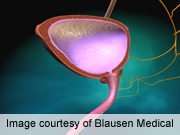
TUESDAY, July 17 (HealthDay News) — Urinary incontinence is often thought of as a problem that occurs after childbirth or in old age, but a new study finds that many young women who have never given birth have the bothersome condition, too.
Researchers in Australia surveyed more than 1,000 women aged 16 to 30 who had never been pregnant and found that one in eight, or nearly 13 percent, reported having urinary incontinence.
Urinary incontinence means leaking urine during certain activities such as running or sneezing, or being unable to hold urine with a full bladder.
Previous research has found the rates are higher among women who’ve had children. But this study shows that urinary incontinence can affect women of all ages, regardless of pregnancy history, and that the condition may be underdiagnosed and undertreated in younger women, experts said.
“Although incontinence is more prevalent as women age and with an increasing number of pregnancies, incontinence can affect women of all ages,” said Dr. Jill Rabin, professor of obstetrics and gynecology at Hofstra North Shore-LIJ School of Medicine, who was not involved with the study.
The study, by Tessa O’Halloran and colleagues at Monash University, in Melbourne, is published in the July 17 issue of Annals of Internal Medicine.
The women who answered the survey came from eight medical clinics and three university campuses in Australia. They were asked to complete a questionnaire about an important issue in women’s health, but were not told it was about urinary incontinence prior to filling it out. About 63 percent of those who took surveys returned them.
Commenting on the study, Dr. Elizabeth Kavaler, a urology specialist at Lenox Hill Hospital in New York City, pointed out that because people who have a problem may be more likely to answer a survey about it, that may mean the study overestimates the number of young women with incontinence.
On the other hand, Rabin noted, the women in the study were mostly normal weight, healthy and active, which may make the incontinence rate a conservative estimate.
There are two types of incontinence — stress and urge incontinence, which have different causes, experts explained. In the study, about 6 percent of women reported stress incontinence, 4.5 percent reported urge incontinence, and about 2 percent reported both.
Stress incontinence is often caused by a weakening of the pelvic floor muscles that hold the bladder in place. Pregnancy and vaginal deliveries can weaken or damage pelvic floor muscles. But other factors, such as obesity or being overweight, are also associated with stress incontinence, although this study did not find an association between weight and incontinence.
Urge incontinence, or feeling the urge to go but not making it to the bathroom, usually has a neurological cause, in that the brain doesn’t have sufficient control over the bladder. Neurological conditions such as multiple sclerosis, dementia or simply advancing age can contribute to urge incontinence, Kavaler noted.
It’s well known that some younger women can experience what is essentially premature aging of that bladder control, and can experience urge incontinence earlier in life.
To alleviate stress incontinence, Kegel exercises, which strengthen the pelvic floor muscles, may help. Women should squeeze their pelvic muscles as if they are stopping the flow of urine for five seconds, then release for five seconds. Repeat that about five times, Rabin advised. Take a break, and then increase your Kegel set up to 10 times in a day.
“Over time, it thickens the muscle that supports the bladder, vagina and rectum and stabilizes it,” Rabin said.
If Kegel exercises aren’t helping, see your doctor. “There are young women who have urinary control issues, there are treatments, and they should seek help and talk to their doctor about it,” Kavaler said.
Rabin pointed out that some women will resort to restricting fluid intake to alleviate incontinence, but that’s a bad idea, she said. Dehydration can contribute to urinary tract infections and constipation, which can also stress the pelvic floor muscles during bowel movements.
The study did not receive university or outside funding.
More information
The U.S. National Kidney and Urologic Diseases Information Clearinghouse has more on urinary incontinence.

